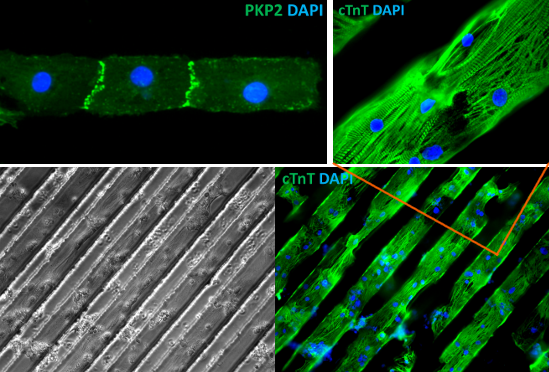Researchers from Prof. Nicola Elvassore’s lab in SIAIS develop new technologies for studying the highly complex cellular microenvironment and its impact on cell behavior. In their latest work published in Annals of Biomedical Engineering, they tackle the mechanical forces and spatial constraints involved in cardiomyocyte organization and pathogenesis, proposing a new model for studying a genetic disease affecting the stability of cardiac mechanical junctions.

Arrhythmogenic Cardiomyopathy (AC) is caused by mutations tothe cell-to-cell junctions in the heart. It often goes undiscovered untilcardiac arrhythmias pose major threats to the life of otherwise seemingly healthy individuals, being a leading cause of sudden cardiac death in adults.
First authors, Sebastian Martewicz and Camilla Luni, from the Lab of Biological Engineering at SIAIS, coupled micro-engineering technologies and human induced pluripotent stem cells (hiPSCs) to study the differences between healthy and diseased cardiomyocytes, and their responses to acutemechanical stress.
The published work provides the first reported insight into long suspected differences in sensing of mechanical stress in AC-cardiomyocytes. Interestingly, the researchers uncovered big differences in the transcriptional profiles of healthy and diseased cells, shedding light on a cell background prone to produce fibrotic tissues, characteristic of the AC phenotype in affected patients.
Link to full paper: https://link.springer.com/article/10.1007/s10439-018-02134-8
Martewicz S*, Luni C*, Serena E, Pavan P, Chen H-S V,Rampazzo A, Elvassore N. Transcriptomic characterization of a human in vitro model of Arrhythmogenic Cardiomyopathy under topological and mechanical stimuli. Annals of Biomedical Engineering.



